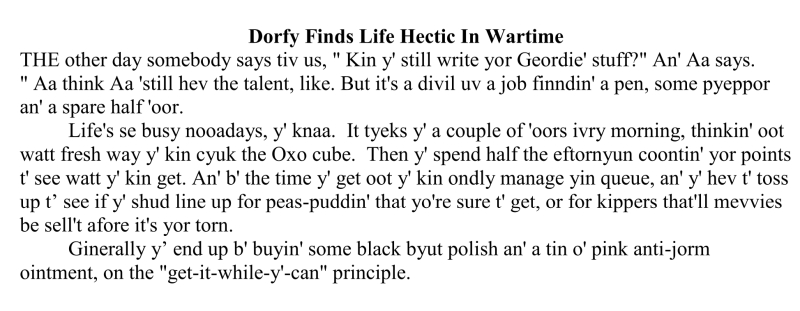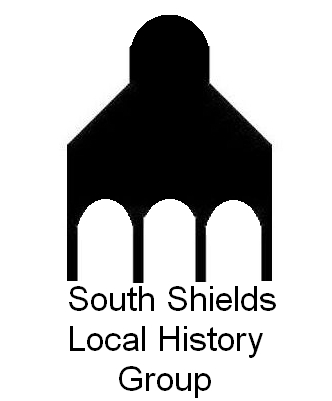Background
In 1939 only around 30% of everything Britain ate was produced domestically – the rest was shipped in from producers and suppliers around the world.
Nazi Germany’s aim was to starve Britain into agreeing a peace settlement rather than trying to defeat her militarily. The German Navy attacked the Merchant Navy ships bringing food and oil into Britain.
On November 1st 1939 the Government announced that rationing was going to be introduced in the near future. The Daily Mail and Daily Express and other conservative newspapers attacked the proposals as they knew that food rationing would mean a fairer distribution of food; less for the rich, mainly in the south and more for the poor, mainly in the industrial north, so food rationing was delayed until January 1940 and it was extended to include meat in March 1940.

Rationing was key to Britain’s war effort. Keeping the population healthy enough to maintain production was essential.
Tyneside was critical to the war effort:
1 Tyneside ships helped feed and defend the nation.
2 Tyneside coal powered those ships and kept the country warm, generated electricity and was the main fuel used for cooking.
3 Tyneside manned those ships for the Merchant Navy bringing in food, war materials and oil.
Ration Books
The Ministry of Food was responsible for overseeing rationing. Every man, woman and child was given a ration book with coupons. No ration book meant no food. Although you also still had to have money to buy the food, rationing allowed a fairer distribution of food but it was not free food!

Basic foodstuffs such as sugar, meat, fats, bacon and cheese were directly rationed by an allowance of coupons. Housewives had to register with particular retailers. They would queue outside each individual shop; butchers, grocers, clothes shop etc hand over their ration book and money then the book was stamped to show that they had received their food allowance for that week.

Not all foods were rationed, fruit and vegetables were never rationed but were often in short supply, especially tomatoes, onions and fruit shipped from overseas.
Weekly Rations
A typical person’s weekly ration consisted of:
1 egg, 2 ounces each of tea and butter, an ounce of cheese, eight ounces of sugar, four ounces of bacon and four ounces of margarine.

Priority allowances of milk and eggs were given to those most in need, including children and expectant mothers.

Attitudes to Rationing
Local people were massively in favour of rationing. In the first few months of the war when rationing had not yet been introduced many goods were in short supply and you could queue for hours then find there was nothing left in the shop, rationing stopped that.


The Shields Gazette reporter Dorfy, real name Dorothy Samuelson-Sandvid, kept spirits high by seeing the funny side of things.


The Shields Gazette sent out “a Woman Reporter” to check attitudes towards rationing.

One of the few rationed items which drew criticism was the tea ration!

Advertisers and Rationing
There were two main sources of advertising during and after the war, the Ministry of Food and commercial companies. The Ministry of Food was constantly stressing the importance of rationing through newspaper, radio and television adverts.

Commercial advertisers where keen to ensure that their products were not impacted too much through rationing. Tate & Lyle, who held a monopoly on sugar production, gave away folders to hold the numerous ration books a shopper would have which cleverly or sinisterly promoted the use of sugar.

Unilever the manufacturer of Stork Margarine gave away thousands of cook books containing dozens of recipes using Stork Margarine.


“The Stork Wartime Cookery Book answers all your food problems. Don’t worry about food rationing after all, very few things are rationed”
Dorfy thinks she can “tell Stork from butter”:

Dried Milk
Fresh bottled milk was rationed from November 1941. “Household Milk” was powdered skimmed milk, it came in a blue and white tin with red stripes. It originated from the United States of America in December 1941 and it carried a label saying “Not to be used for babies”. One tin was the equivalent of four pints of skimmed milk. It cost about 9 pence and you were allowed one tin every 4 weeks.

“National Dried Milk” was full cream milk and was intended for babies and expectant mothers.


Dried Egg Powder
Dried egg powder also came from the USA and it was used as a substitute for real eggs. It was often used to make omelettes which were promoted as an alternative to meat.



Seemingly Geordie children could tell the difference when dried eggs were used in pancakes and puddings probably as it was more “rubbery”!

Woolton Pie
Lord Woolton was the very successful Minister of Food from April 1940 and the “Woolton Pie” was named after him. “Woolton Pie: steak and kidney pie without the steak and kidneys.” There were many recipes at the time which tried to provide alternatives to popular dishes because the ingredients were not available due to rationing and wartime shortages. A reporter from the Shields Gazette asked the Ministry of Food for the recipe.


SPAM
The word SPAM is probably a contraction of “Spiced Ham”. It was widely used during World War II but it very quickly became a term of derision.


A Jarrow Alderman complained of some people getting beef whilst others get Spam at British Restaurants!

Maybe this was the inspiration for Eric Idle the South Shields born star of Monty Python when he created his musical called Spamalot!
Impact of Rationing
It is generally regarded that the period of rationing was a healthy one for most British people, with a carefully balanced diet, no excessive sugar or fat. An adult male would have been allowed about 3,000 calories in their daily food ration. This is higher than the 2,500 recommended today but nearly all people would have been engaged in much more physical work than they are today. Children and pregnant women were given extra rations of milk, eggs and other items. Sweets were rationed between 1942 and 1953 which would have been of considerable benefit to children’s teeth and general weight.

With Tyneside being a poor area, rationing was particularly beneficial as the price of most goods was tightly controlled allowing local people to buy more food for their money.

End of Rationing
Rationing carried on after the war with bread being added to the list of rationed items in 1946. In the early 1950s most items came ‘off the ration’. Food rationing ended when meat stopped being rationed in 1954.
Sources:
British Newspaper Archives
Dorothy Samuelson-Sandvid (Dorfy)
Imperial War Museum
Photos:
Imperial War Museum
Tyne and Wear Museums
Wikipedia
